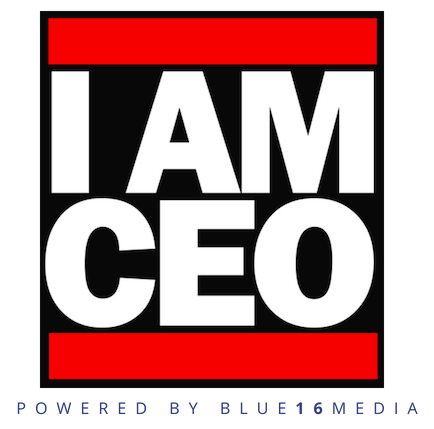How to Use the Basic Vocal Warm-Up Tracks
Hey everyone,
We’re so excited that the app has been a hit among our users, and something that’s important to us is building up our repertoire of tools and tricks that will enhance your singing experience! Warming up the voice is crucial to long-lasting vocal health. Depending on what genre or style you’re singing, music has different demands from song to song and person to person. Taking care of your instrument allows you to enjoy a variety of music with the confidence that your voice will stay strong. Furthermore, it’s important to remember that each singer has a unique set of skills and that warm-ups should always be adapted to suit those needs, whatever level of singing you’re enjoying.
A note on the ranges of the tracks:
Each of these warm-ups has general ranges that are typical of most choir singers. You may find that the range of a particular warm-up is too high or too low, or that you need an even greater range of notes to truly exercise your whole voice. These tracks are designed to be used in any way that best suits you!
If it starts too low, just listen to the beginning of the track and dive in as soon as it is comfortable for you.
If it extends too high (or starts too high in the case of the descending scale), you can pause your singing and continue to listen to the track until you are ready to jump back in again. Or you can continue to sing by jumping down the octave.
If you are an experienced singer that needs a larger range than any one track gives you, you can try singing in a different octave (or use Harmony Helper’s octave adjustment feature to hear it in the appropriate octave as well). Or you can try using a different voice part’s scales to get that extension higher or lower based on your needs. For example, if you are a Soprano and you use the Soprano warm-up tracks, but really need to make sure you are warming up your lower register even farther than the track takes you - try using the Alto warm-up tracks as well, and sing the portion that is comfortable for you.
With all of these warm-ups, it is so important that you take it easy and don’t strain! Your voice is like any other muscle that you work out. You have to start slowly and comfortably before you amp up your workout.
Be sure to drink lots of water before, during, and after a practice session.
How to use the Basic Warm-Up Tracks in the Harmony Helper Songbook:
Gentle Voice Wake Up - Hum or Lip Trill
This is a great warm-up to start any vocal session. It starts on “Do” jumps to “Sol” and then back down to “Do”. By gently humming or vocalizing on a lip trill, you are waking up the voice by initiating the flow of breath and preparing your body to sing. Strong breath support is key to healthy singing, and lip trills help promote deep, diaphragmatic breathing. The hum or lip trill can take any unnecessary tension away from your voice. Try this warm-up both hitting the pitches firmly on the rhythm and by sliding between the pitches (legato, or smooth and connected) to warm up all of the tones in between. For bonus relaxation, try gently swinging your arms or bending your knees a bit while you sing. [Note: If lip trills don’t come easily, feel free to do this exercise on a hum, as it accomplishes the same effect of starting the flow of air with gentle sound.]
5 Note Scale (2 Octaves) - Ranges are divided by individual voice part.
This is a versatile scale that climbs through the first 5 notes of the major scale and back down again. You can try this on a single pure vowel sound such as Ah, Eh, Ee, Oh, or Oo; with numbers (1-2-3-4-5-4-3-2-1); with Solfege (Do Re Mi Fa Sol Fa Mi Re Do); or any variety of other phrases to also warm up articulation (such as “Mommy made me mash my M & M’s”).
Triad Arpeggio - Ranges are divided by High (Soprano and Tenor) and Low (Alto and Bass) voices.
This warm-up allows you to practice leaps from note to note. The scale plays Do, Mi, Sol, Mi, Do (or 1-3-5-3-1). Like the 5 note scale, feel free to try it out on pure vowels, numbers, solfege, or any other phrases you like to warm up articulation with.
5 Note Descending - Ranges are divided by High (Soprano and Tenor) and Low (Alto and Bass) voices.
I like to use this warm-up as my cool-down. Like the others, feel free to experiment with vowels and sounds, but I tend to end my warm-up session with this exercise on an easy Oo or Ah. It starts high and walks down from Sol to Do (Sol, Fa, Mi Re, Do), or said in numbers 5-4-3-2-1. Take it easy and stay light, letting the air flow easily ESPECIALLY as you get lower in your range.
Happy Singing!
Josh Totora
Harmony Helper Music Supervisor
Video Roundup May 1: Alice by Heart Performs 'Down The Hole,' Broadway Stars Take the #Hear1Sing1 Challenge, and More
A host of Broadway celebrities and stage favorites are taking to social media to spread joy when attending the theatre is not an option. To keep folks entertained, the cast of Off-Broadway's 2019 production of Alice by Heart reunited to sing "Down the Hole" to benefit MCC Theater, Broadway favorites are challenging friends and fans to the #Hear1Sing1 challenge, and more.
Alex Brightman, Rob McClure & Jelani Remy Join Social Media Fundraising Campaign
Today at 3 p.m. ET Alex Brightman, Rob McClure and Jelani Remy are kicking off a COVID-19 fundraising campaign on social media in collaboration with Harmony Helper, an app that uses patented technologies to help singers improve their performance, to raise money for the Actor's Fund as many performers are in need during this crisis.
Special Skills: Teach Yourself the Invaluable Ability of Sight-Reading
Today, most of us have a bit more time at home on our hands then we used to. Whether you want to bulk up the special skills section of your résumé or just want to try something new, Playbill is here to serve! The ability to sight-read is not a requirement of the job of a performer; but the skill can certainly become a make-or-break factor in casting or (as we learned from Lynn Ahrens and Stephen Flaherty in their notes about writing the Ragtime score) the difference between being able to add in a necessary new song and not.
Montclair Entrepreneur Helps Broadway Performers Sing Harmonies
Andrew Goren is a 20-year-old entrepreneur from Montclair who has created a unique app, just launched in October, that helps performers in the musical theater industry. A theater performer himself, Goren developed a solution to a problem he saw first-hand in the industry.
IAM472- Founder Helps Singers Improve and Practice Effectively
Andrew Goren is the founder and CEO of Harmony Helper. As a passionate musical theatre actor, Andrew has been on a quest to develop the perfect way to learn and sharpen singing and harmonizing abilities. With over 10 years of singing/performing experience, his unique insights and vision have led to the creation of the amazing and elegant Harmony Helper app.





